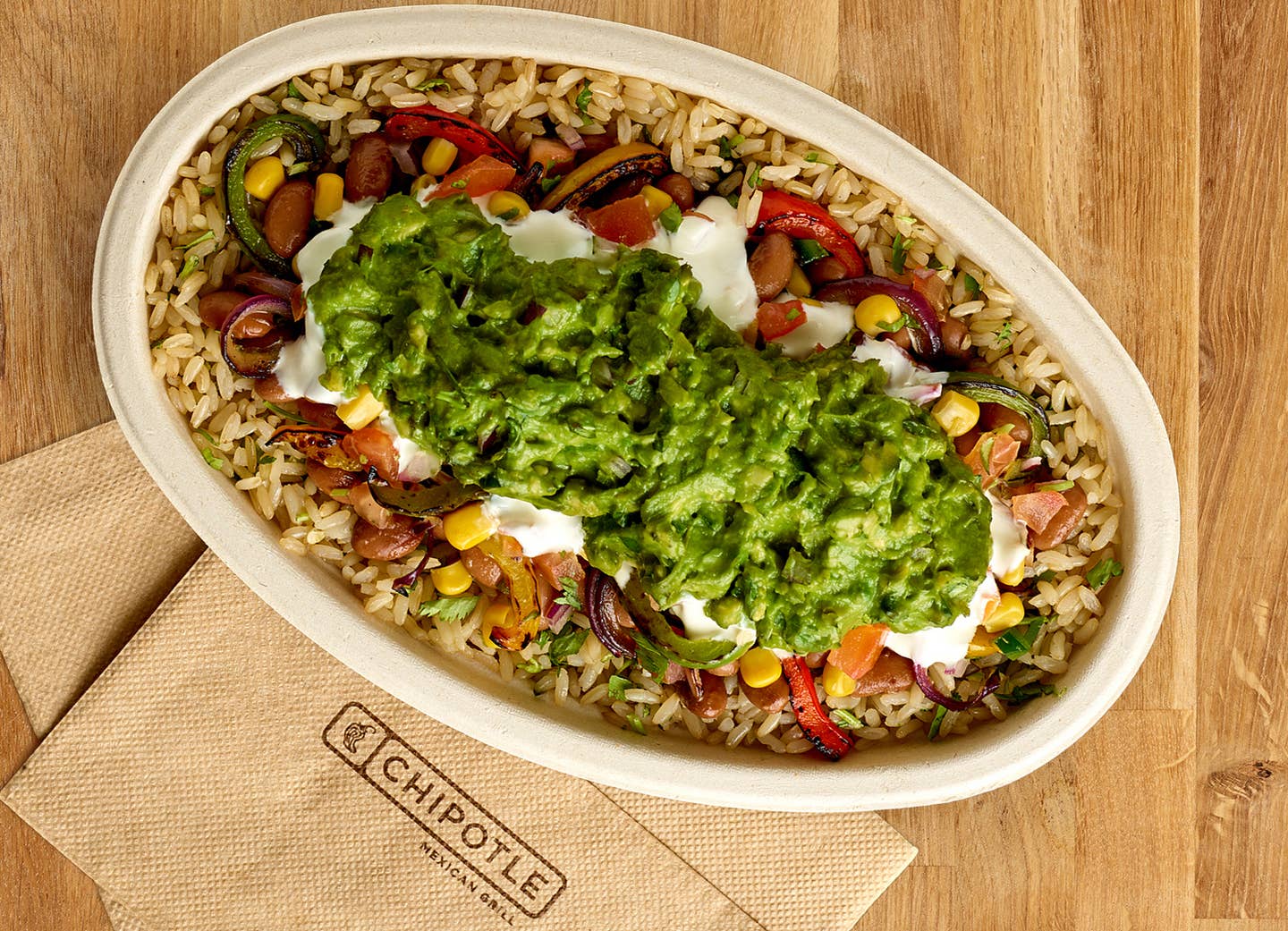
Study: To Fight Infections and Lower Antibiotic Resistance, Just Eat This
When was the last time you showed up to your doctor's or walk-in clinic with a sinus infection and the doctor refused to give you antibiotics, citing the fact that over-prescribing these miracle drugs contribute to the growing threat of antibiotic resistance? The fact is that antibiotic-resistant bugs are growing, as our arsenal of medications becomes less effective against life-threatening infections, and one day when you most need the bacterial fighters to knock out a deadly infection – whether it be sepsis or another killer – they may not work.
Antibiotic resistance is a growing threat in this country, as superbugs and powerful bacterial and other germs develop the ability to defeat the drugs designed to kill them. Approximately 3 million antibiotic-resistant infections occur in the U.S. each year, killing more than 35,000 people unnecessarily. Now there may be a simple way, through diet, to help strengthen the anti-microbial drugs and allow our bodies and immune systems to defeat them, a new study says. That superfood? Dietary fiber.
Dietary Fiber Lowes Antibiotic-Resistant Genes
Everyone extols the virtues of fiber, as a dietary ingredient that helps you lose weight, lower your risk of disease and keep blood sugar steady and insulin from surging. But now a new study shows just how powerful dietary fiber is when it comes to fighting off infections and helping the meds your doctor gives you to do their job. In a study just released, researchers found that a high fiber diet lowers antibiotic resistance in the body, allowing life-saving drugs to do their job.
The study, published in the American Society for Microbiology, looked at how the bacteria in the gut – known as your microbiome – can help the immune system rally its defenses against microbial invaders of all sorts. The researchers took 290 adults and asked them what they ate in the past 24 hours, then measured which individuals had more antibiotic-resistant genes (ARGs) present in the body.
Individuals in the lowest quartile of ARGs (low-ARG) consumed significantly more fiber in their diets than medium- and high-ARG individuals, meaning those would be healthiest and the drugs would work best on them.
"Since resistance to antibiotics is encoded in the microbiome, interventions aimed at altering the taxonomic composition of the gut might allow us to prophylactically engineer microbiomes that harbor fewer antibiotic-resistant genes (ARGs). Diet is one method of intervention, and yet little is known about the association between diet and antimicrobial resistance," the researchers posed as a starting point.
Since antibiotic-resistant genes create the opportunity for more illness, costing the health-care system millions each year, and leading to tens of thousands of death, the study authors wrote, "diet is a powerful method for shaping the human gut microbiome and may be a tractable method for lessening antibiotic resistance."
"We examined this relationship in healthy individuals who contained various abundances of antibiotic resistance genes and found that individuals who consumed diverse diets that were high in fiber and low in animal protein had fewer antibiotic resistance genes. Dietary interventions may be useful for lessening the burden of antimicrobial resistance and might ultimately motivate dietary guidelines which will consider how nutrition can reduce the impact of infectious disease."
How to Eat to FIght Infection
So if you are suffering from anything bacterial (as opposed to viral, such as COVID-19) whether it be a debilitating sinus infection or recurring UTI, add more fiber to your diet to allow the antibiotics to kick in faster and knock those infectious agents to the curb.
Antibiotics are the most powerful tools we have to fight life-threatening infections, like those that can lead to sepsis. However, anytime antibiotics are used, they can cause side effects and contribute to antibiotic resistance. The CDC estimates that of the 150 million courses of antibiotics given out each year, about one-third, or 47 million antibiotics are not necessary.
How often have you tried to get antibiotics for a sore throat or sinus infection and been told that you need to tough it out, for the communal and individual benefit that we as a nation are experiencing lower antibiotic drug efficacy, and that as we become more antibiotic-resistant, the drugs work less and less well?
So fiber could be a solution to bringing back our ability to fight off infections better and help these miracle life-saving drugs (which can especially be needed in the case of post-surgical infection) to do their job and knock out the infection, or in the case of more localized infections such as an ear or tooth infection, give our immune system the head start it needs to do its job.
Eat a High Fiber Diet
To boost your overall health and fight off infections, adding more fiber to your diet is a good idea To do that, eat more vegetables, fruit, whole grains, legumes, nuts, and seeds. Check out this list of the top 20 sources of fiber. Animal product such as meat, dairy, poultry and fish do not contain fiber, which is only found in plant-based foods.
The minimum amount of fiber to eat a day is 28 grams for women and 36 grams for men, according to the USDA recommendations. Yet, most Americans don't get even close to that amount. If the USDA recommends that Americans eat 5 servings of fruit and vegetables a day, less than 10 percent of us achieve that goal, experts say.
"In fact,19 out of 20 Americans are not just a little deficient in fiber but eat extremely low amounts," says Dr. Will Bulsiewicz, an author and MD who lost 50 pounds on a high-fiber diet and urges his patients to load up on vegetables. His book, Fiber Fueled: The Plant-Based Gut Health Program for Losing Weight, Restoring Your Health, and Optimizing Your Microbiome, and new cookbook, help you eat more fiber to achieve your health and wellbeing goals.
Fiber is the roughage in vegetables and fruit that slows down the absorption of nutrients in the diet. High-fiber diets have been linked with lower disease risk and higher success at weight loss. For 5 delicious plant-based recipes that are high in fiber check out this list.
Bottom Line: Eat More Fiber to Lower Antibiotic Resistance, Study Says
To help your body fight off infection and lower the chance that you succumb to antibiotic-resistant superbugs, a new study out of UC Davis, California finds that people who eat the most fiber have the healthiest microbiomes, which is where your body begins its defense and where antibiotic-resistant genes can be found. The more fiber, the healthier your body stays.
The Top 20 Veggies with the Most Protein
Everyone who contemplates going plant-based has the same question: where do I get my protein? Simple answer: Vegetables! Contrary to the popular belief that you have to eat animal protein to get enough into your diet, one of the best ways to get protein is by eating vegetables. Animals provide protein because they're fed a diet of plants that are high in protein, so if you cut out the middleman -- or middle cow or middle chicken in this case -- you can get the same protein just by going direct-to-the-source.
1. Soy Beans
Soybeans are a legume but they are such a great source of protein that we had to lead the veggie list with it. There is more protein in just one ounce of soybeans than a cup of sliced avocado!1 cup equalsProtein - 28.6gCalories - 298Carbs - 17.1gFiber - 10.3gCalcium - 175mg
2. Peas
If the pod, that peas are grown in, is split down the middle, that is an indicator they are ripe. Seeds inside the pod vary and can be green, white or yellow. 1 cup equalsProtein - 8.6gCalories - 134Carbs - 25gFiber - 8.8gCalcium - 43.2 mg
3. Corn
Fresh corn is a great source of energy for those who like to stay active. Protein isn't all that corn has to offer. Corn provides the body with potassium and B vitamins. 1 cup equalsProtein - 5.4gCalories - 177Carbs - 123gFiber - 4.6gCalcium - 4.9mg
4. Artichoke Hearts
Artichokes are part of the sunflower family. The fiber in artichoke hearts is great for supporting digestion. 1 cup equals Protein - 4.8g Calories - 89 Carbs - 20g Fiber - 14.4g Calcium - 35.2mg
5. Asparagus
If not properly stored, Asparagus tends to go bad quickly, To elongate freshness, put damp paper towels around the stems, or place the entire asparagus bunch in a cup of water (like flowers) to maintain freshness longer. 1 cup equals Protein - 4.4g Calories - 39.6 Carbs - 7.4g Fiber - 3.6g Calcium - 41.4mg
6. Brussel Sprouts
Brussel sprouts have more Vitamin C than an orange. If your Brussel sprouts have a rancid odor that is an indicator you overcooked them. The smell occurs because the sprouts are composed of a great amount of sulforaphane. 1 cup equals Protein - 4g Calories - 56.2 Carbs - 40g Fiber - 4g Calcium - 56.2mg
7. Broccoli
If you are trying to lose weight broccoli is a great addition to your diet because it consists of 90 water and is also high in fiber. 1 cup (chopped) equals Protein - 3.8g Calories - 54.6Carbs - 11.2g Fiber - 5.2g Calcium - 62.4mg
8. Mustard Greens
Mustard greens provide the body with tons of Vitamin A, Vitamin C, Vitamin K and fiber. Adding steamed mustard greens into your diet has been known to lower cholesterol and reduce inflammation. 1 cup equals Protein - 3.2 g Calories - 21 Carbs - 2.9g Fiber - 2.8g Calcium - 104mg
9. Avocado
Avocado is commonly mistaken as a vegetable but it is technically a fruit. This fruit had to be included in our veggie list because it isn't just tasty but super nutritious. Avocados are packed with protein but they are a great source of potassium and fiber. Avocados are a great addition to any salad, sandwich and even smoothie! 1 cup equals Protein - 3.0 g Calories - 240 Carbs - 12.8 g Fiber - 10.1g Calcium - 18 mg
10. Onions
Onions are an unappreciated food hero since they provide 20 percent of your daily Vitamin C and deliver an abundance of antioxidants that can reduce inflammation.1 cup (chopped) equalsProtein - 2.9gCalories - 92.4Carbs - 21.3gFiber - 2.9gCalcium - 46.2mg
11. Beets
The entire beetroot is edible including the leaves which contain loads of vitamin A, calcium, iron and potassium. Beetroot is high in sugar but is considered one of the most nutritious veggies used in salads and soups. 1 cup equals Protein - 2.8 g Calories - 74.8 Carbs - 17g Fiber - 3.4g Calcium - 27.2mg
12. Oyster Mushrooms
Oyster mushrooms are commonly seen in Chinese dishes. They grow best in a controlled environment indoors. Oyster mushrooms have so many nutrients to offer besides protein such as iron, calcium, zinc and folic acid. 1 cup (raw and sliced) equals Protein - 2.8g Calories - 37 Carbs - 5.6g Fiber - 2.0g Calcium - 2.6mg
13. Bok Choy
Bok Choy is a member of the mustard family. One of the oldest cultivated vegetables in the world, Bok Choy means "white vegetable” and is a great source of vitamins A, C, B6, K, and E, magnesium, potassium, iron, manganese, and calcium. 1 cup equals Protein - 2.7 g Calories - 20.4 Carbs - 3.1g Fiber - 1.7g Calcium - 158mg
14. Green Beans
Green beans are a great source of vitamins B, C and K, and minerals such as magnesium, iron and manganese. Green beans should be cooked before eating, to destroy lectins. China is the biggest grower of green beans in the world, exporting over 15 million tons a year. 1 cup equals Protein - 1.8 g Calories - 31 Carbs - 7 g Fiber - 2.7 g Calcium - 37 mg
15. Cauliflower
The most nutritious way to consume cauliflower is steamed. Don't get intimidated by orange, purple or green cauliflower. All three types have the same benefits as white cauliflower. 1 cup equals Protein - 2.2g Calories - 28.6 Carbs - 5.4g Fiber - 2.8g Calcium - 19.8mg
16. Turnip
You can eat the entire plant, root and leaves. The turnip root is high in vitamin C and the greens are high in vitamins A, C, E, B6 and K, believed to counter inflammation. Add turnip roots to soup, or mash them. Add them to salads. 1 cup equals Protein - 1.6g Calories - 28.8 Carbs - 6.3g Fiber - 5.0g Calcium - 197mg
17. Alfalfa Sprouts
Alfalfa sprouts might be little but they sure are powerful. Plus they're quick and easy to grow. They are loaded with Vitamin C, Vitamin K, Iron and more. But because they have been known to carry bacteria, make sure to fully cook alfalfa sprouts if you have a fragile immune system or are pregnant. 1 cup equals Protein - 1.3 g Calories - 8 Carbs - 0.7 g Fiber - 0.6 g Calcium - 10.6 mg
18. Tomatoes
Keep your tomatoes fresher for longer by storing them stem down. When exposed to sunlight the Vitamin C in a tomato will diminish. 1 cup equals Protein - 1.3g Calories - 26.8 Carbs - 5.8g Fiber - 1.8g Calcium - 14.9mg
19. Zucchini
Zucchini has an abundance of potassium, even more than a banana! The reason zucchini isn't high in calories is that it is made up of 95% water. 1 cup equals Protein - 1.2g Calories - 28.8 Carbs - 7.1g Fiber - 2.5g Calcium - 23.4 mg
20. Spinach
Spinach is filled with Vitamin A, Vitamin E, Vitamin K, fiber and protein. The best part about spinach is you can sauté it, blend it or eat it raw! Spinach is best grown in rainy and cool weather. 1 cup equalsProtein - 0.9gCalories - 6.4Carbs - 1.0 gFiber - 0.6gCalcium - 27.7 mg
More From The Beet






